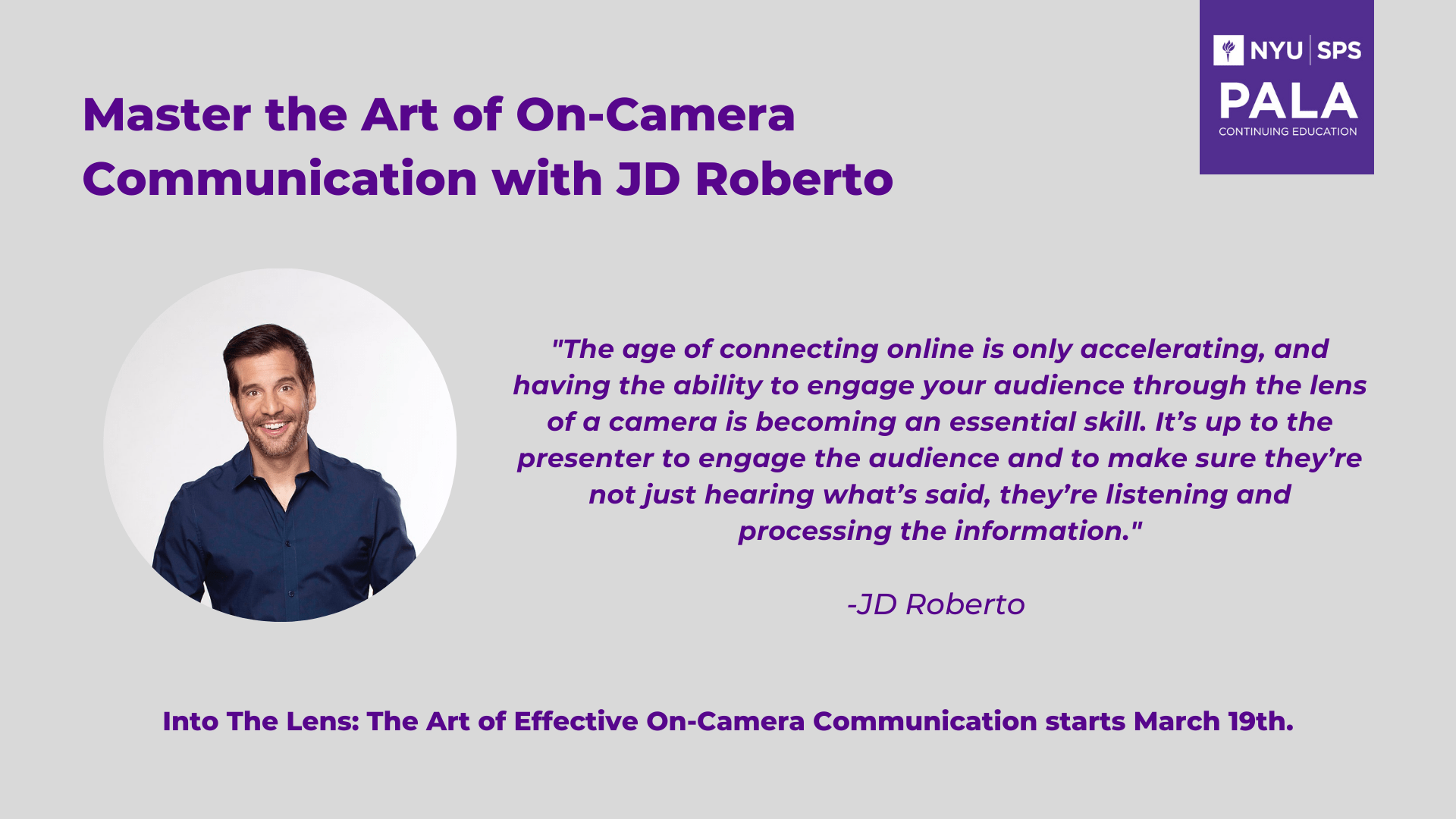In today’s media-centric world, the ability to communicate effectively on camera is no longer just advantageous, it is a fundamental skill crucial for success across diverse industries. Executives, community leaders, teachers, sales professionals, and journalists alike recognize that connecting with an audience through the lens is paramount to achieving their goals.
Introducing Into The Lens: The Art of Effective On-Camera Communication, a dynamic course led by the seasoned instructor JD Roberto. With 30+ years of experience as a distinguished TV personality, actor, and on-camera communication coach, JD empowers students to not only acquire but also master the skills and confidence necessary to thrive on camera.
We got in touch with JD Roberto to get the inside scoop on what to expect from his course. Here’s what he had to say:
What can students expect from the class?
JR: Students can expect to develop techniques and skills to dramatically improve their comfort level and presence when speaking on camera. The class is about DOING, getting in those all-important reps speaking to the camera with authenticity and confidence. We’ll tackle technical aspects like lighting, camera angles, and teleprompter reading plus practical considerations like breath control, pacing, and how to manage those ever-present nerves.
What inspired you to teach this course?
JR: So much important, inspiring, useful information gets lost because of how it’s presented. How you communicate is as important as what you communicate. I wanted to take what I’ve learned from 30 years in TV and Film and distill it into essential skills that anyone can put to use.
In the age of virtual meetings and online content creation, why is effective on-camera communication more important than ever?
JR: So much of human interaction involves interpreting body language and generally sensing the energy and mood of the audience. Doing that remotely, through the camera lens, requires developing an entirely new skill set. The age of connecting online is only accelerating and having the ability to engage your audience through the lens of a camera is becoming an essential skill. It’s up to the presenter to engage the audience and to make sure they’re not just hearing what’s said, they’re listening and processing the information.
How has your experience as a TV personality influenced how you teach this subject?
JR: I originally trained at NYU in experimental and classical theater, so the first time I stepped in front of a camera I was utterly lost. It took years of training and experience to learn how to truly SEE the audience on the other side of the camera. After nearly 4,000 hours of TV and film production, I’ve learned how to bring the intimate and authentic feeling of a one-on-one conversation to my work on camera. The truth is, it doesn’t matter if you’re delivering a sermon, hosting a game show, or presenting an annual report to shareholders, the same skills and techniques apply.
What do you find most fulfilling about sharing your knowledge and experience with students?
JR: My favorite part of teaching is witnessing that “Ah ha!” moment with students. When knowledge, repetition, and investment turn into real understanding and mastery, that’s as good as it gets. The best students are curious, bold, and willing to leave their egos at the door. Right outside of your comfort zone is where all important growth happens.
Sign up for Into The Lens: The Art of Effective On-Camera Communication today!
